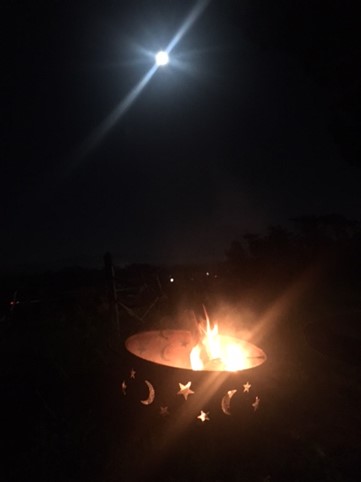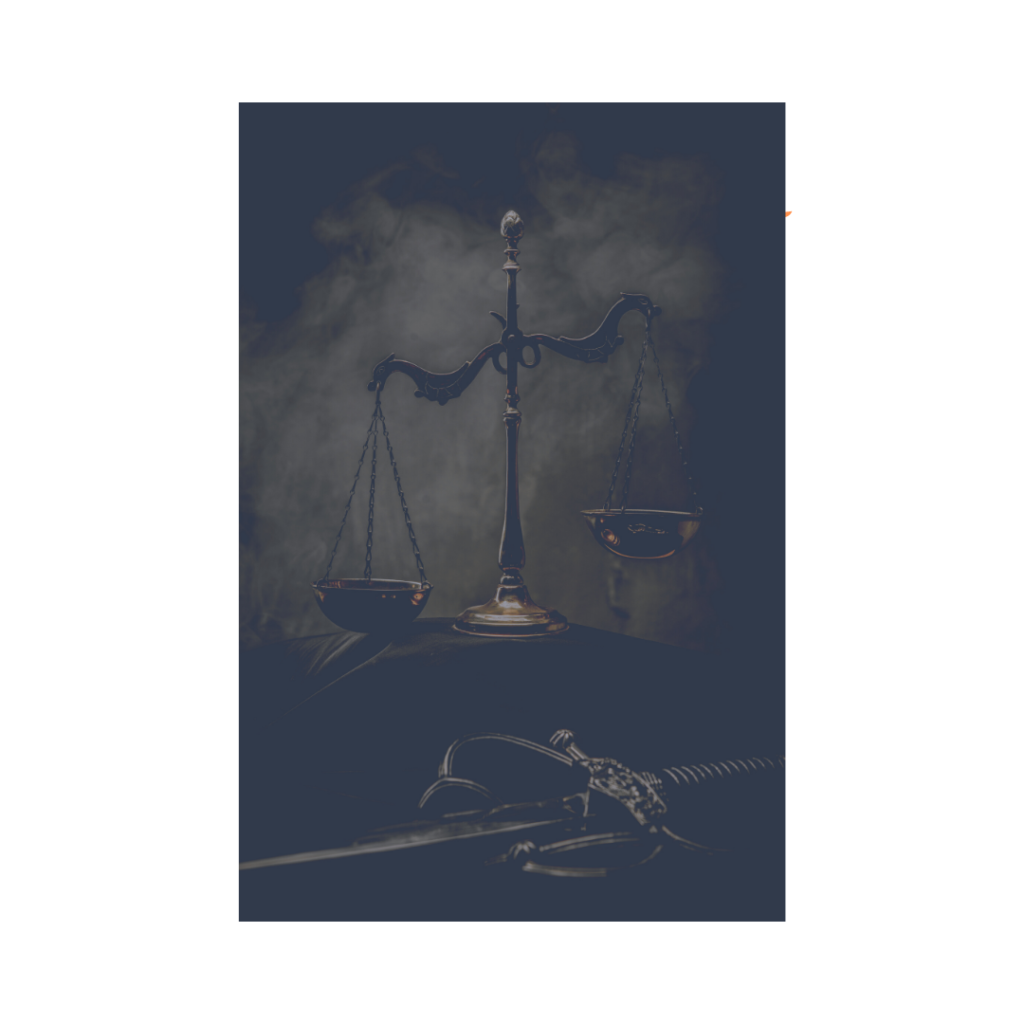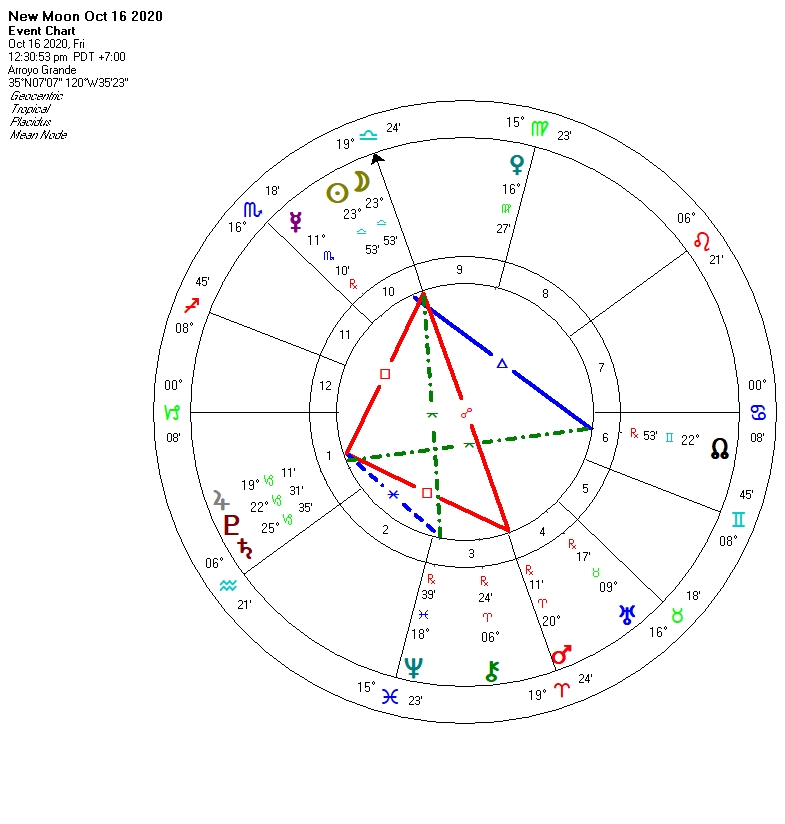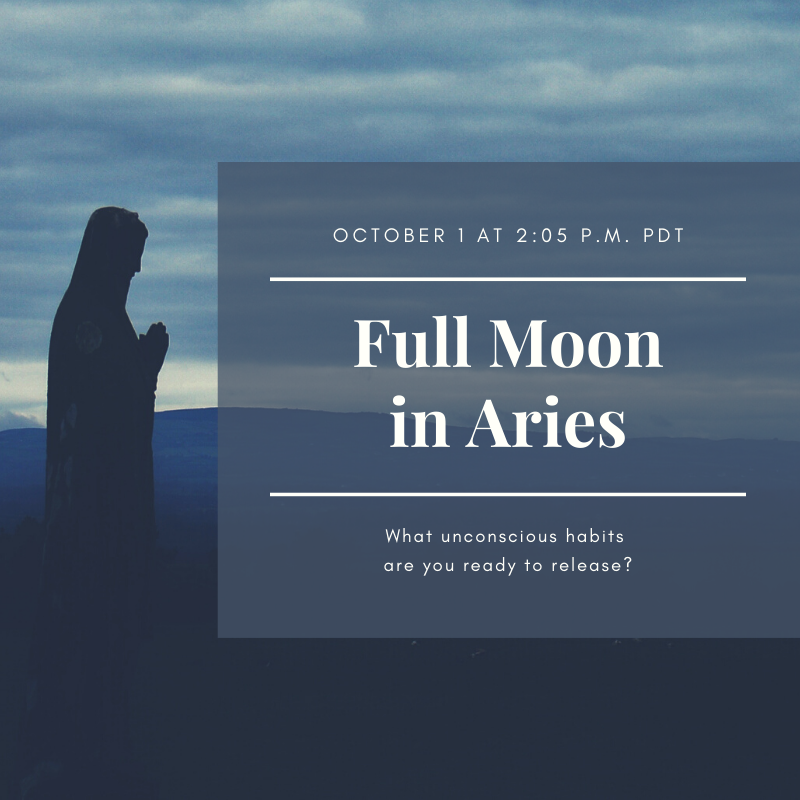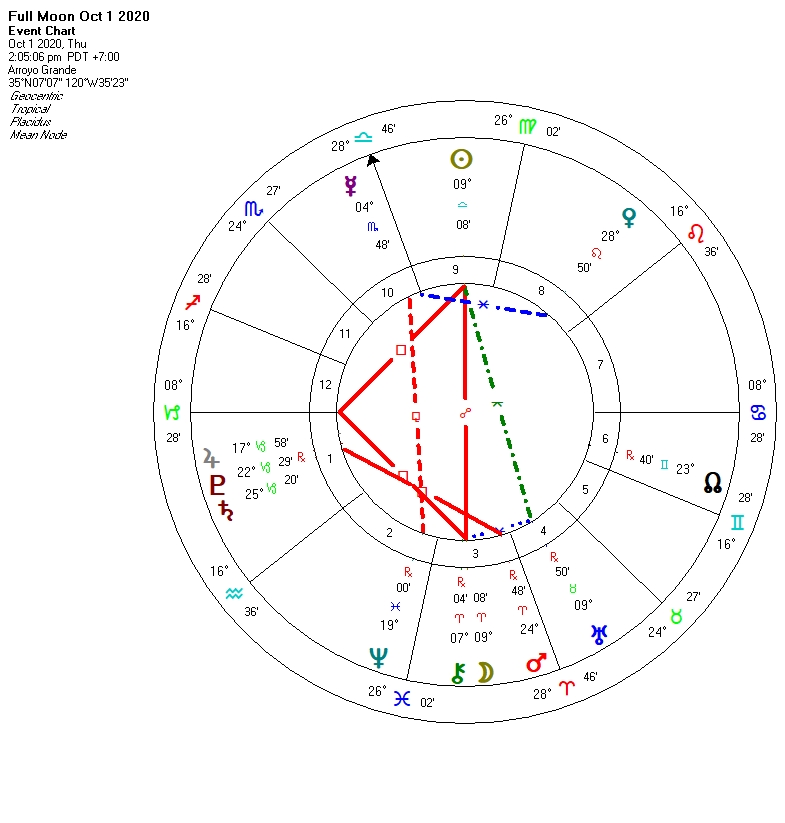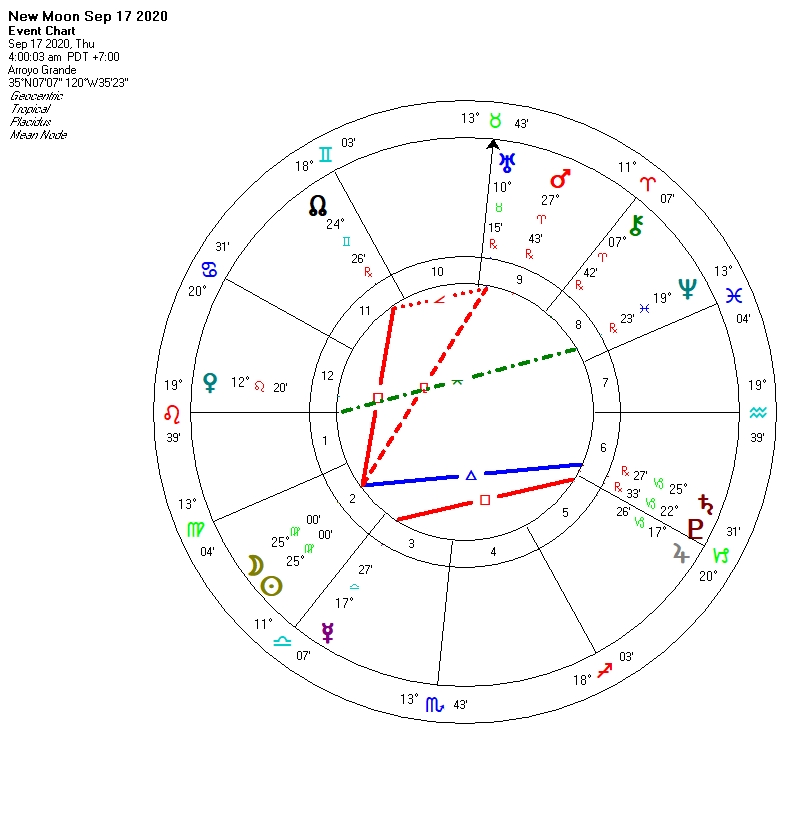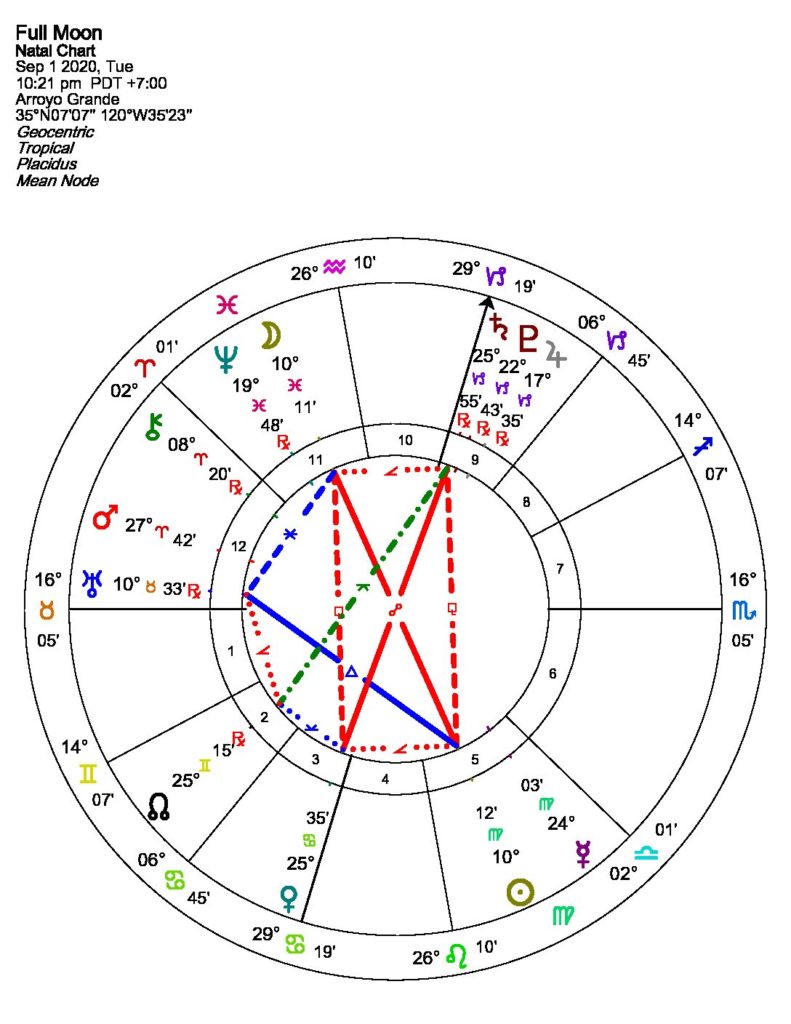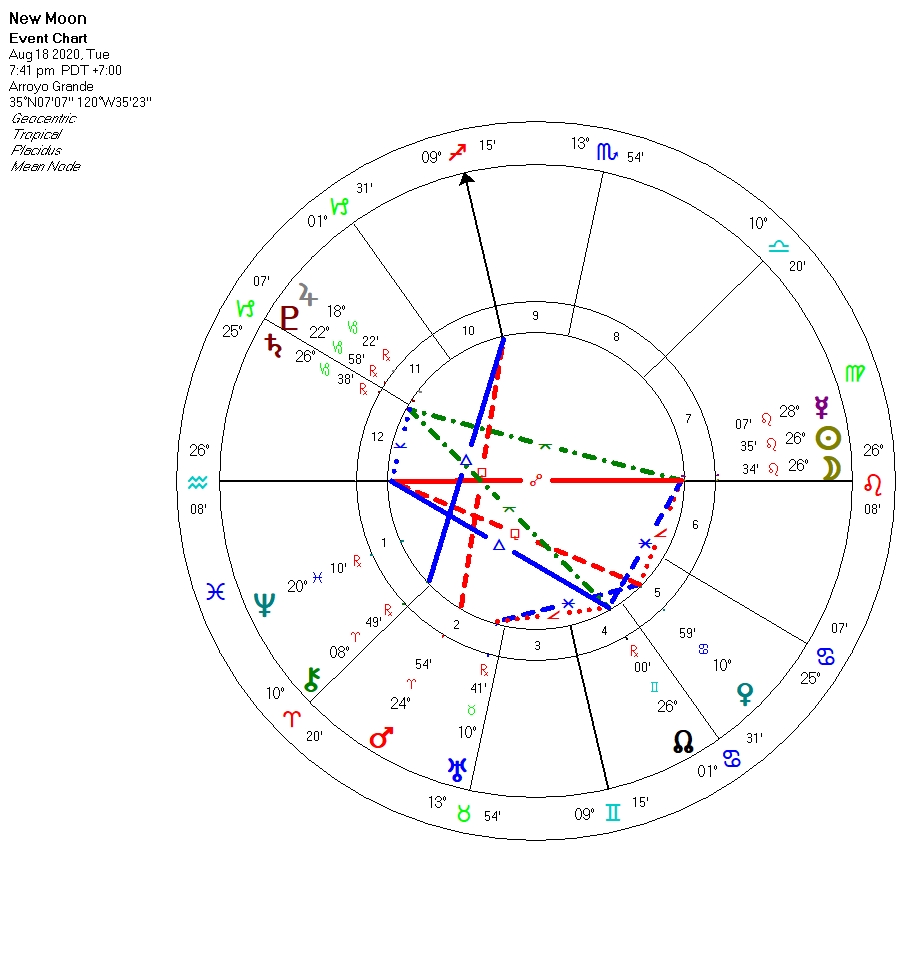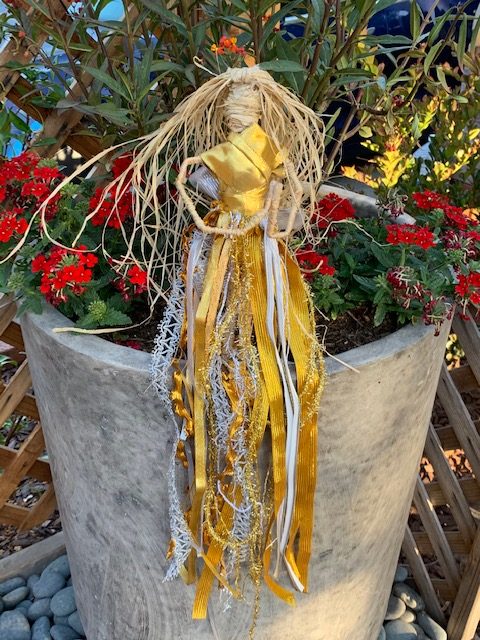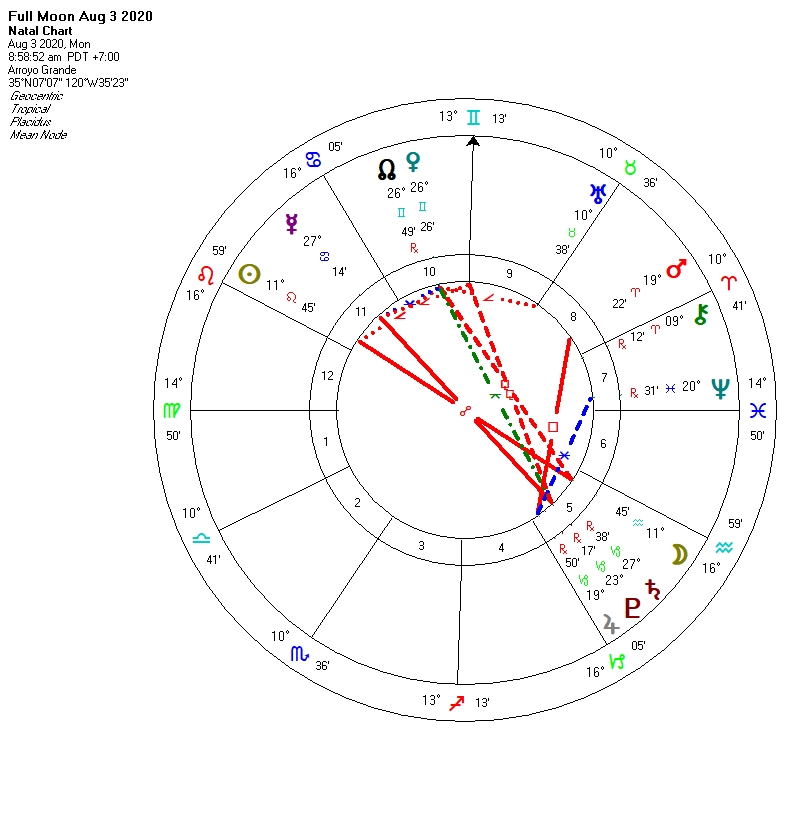Samhain/Halloween Full Moon October 31, 2020
We experienced a special full moon this morning at 7:49 a.m. PDT as it rang in the time of Samhain, known as Halloween. The full moon in Taurus is opposite the sun in Scorpio giving us a time of deep reflection into what we honor as beauty and comfort. Uranus is conjunct the moon indicating that some unexpected changes may occur in our unconscious. Uranus brings us a look into the primordial chaos. We may be jolted to start new habits. You may feel the urge to change your appearance today, beyond tonight’s costume!
The Sun, Moon and Uranus are all at the midpoint of Mercury and the mid-heaven today as well. According to Reinhold Ebertin’s The Combination of Stellar Influences, this is about one’s own self-knowledge and personal outlook. This is a time of inner reflection and possible sudden change in our thoughts. We may experience a push to act on those new insights.
Halloween is known as Samhain for most pagan traditions. It is the New Year’s Eve feast for the Celts and many pagans today. According to the Witches’ Bible, it is “the mysterious moment which belonged to neither past nor present, to neither this world nor the Other.” It is a time outside of time and thus a time when the veil between the Otherworld and physical world is at its thinnest.
Alexei Kondratiev writes in the Apple Branch of five dominant themes of Samhain: renewal, hospitality for the dead, dissolution, timelessness, and sacrifice. I’m going to explore folklore and traditions through these 5 themes.
Theme of Renewal
Samhain marks the death of the light half of the year and the birth of dark half of the year. It is in darkness that all beginnings hatch. Seeds sprout under the ground and humans begin to form in the darkness of the womb. As we enter the dark half of the year, we enter the goddess’ cauldron of transformation.
Samhain is a time of affirming that physical death is not the final act of existence. Samhain celebrates the triumph of life over death.
In ancient pagan times, the bonfire was a symbol of renewal. All household fires were extinguished before Samhain. Then a large bonfire was lit on a hill. In Scotland and Wales, these were built for days ahead on the highest ground near to the house. Then, all the households would relight their own fires from the Samhain bonfire. This was the marking of the New Year and new projects.
Samhain was also the time that agricultural field work was to be abandoned to make room for the new. Any crops that were not harvested by Samhain were left to rot. There was a belief that the “Pooka” came through and poisoned any leftover crops after Samhain.
Theme of Hospitality for the Dead
The theme of hospitality for the dead is one that crosses over many cultures. For the celts, Feile na Marbh, was the feast of the dead where deceased ancestors and other friendly spirits are invited to the feast and to be reunited with loved ones who are otherwise separated by time and dimensions of existence. It is considered a time to strengthen karmic ties with those that you wish to be with again through another lifetime.
Christianity tried to take over the holiday much like they did with other pagan holidays. The aspect of communion with the dead was Christianized as All Hallows. The date was moved to November 1 and extended to the whole church by pope Gregory IV in 834. The reformation abolished it as it was “too pagan.” It was formally restored by the church of England in 1928 when they assumed that the old pagan associations were dead, which we know is not true.
Mexico has their Day of the Dead festival which also falls during the window of Samhain. They honor their ancestors with drinking and feasting and to toast the personification of death, who was believed to take this day off as his one day off for the year.
Other cultures have a dumb supper which is a feast for the dead. Some cultures believe in eating with the dead while others feel that the food left for the dead should not be eaten by the living.
Theme of Dissolution
Samhain is also known as mischief night and the start of the reign of the Lord of Misrule. It is a time of looking primordial chaos in the face to discern in it the seeds of a new order.
Samhain is a time of dressing up in masks and putting on a different face which breaks the bonds of what society expects and helps to bring about the realization of the authentic self. Cross dressing was common during Samhain as it was a way to shed the trappings of gender. “The dissolution of the incomplete and spiritually unproductive social persona allows the emergence of a fresh identity more open to Otherworld gifts and thus capable of magical influence of the environment,” explains Kondratiev in The Apple Branch.
Pranks are common during Samhain. It was a time of tricking those in power to help balance the power of society. In Rome, Samhain was known as upside down day when kings were slaves and slaves were kings.
The practice of carving pumpkins and gourds come from ancient times when faces where carved into gourds to scare off evil spirits.
Theme of Timelessness
Celtic Mythology sees Samhain as the partial return to primordial chaos. It is the dissolution of established order in order to start anew. This escape from the linear progression of time makes it ideal for divination.
Most of the divination of the ancient ancestors was for future marriage partners. Today we see divination of upcoming events of the year or issues that should be considered for the year. There was much circumstance over who was the first visitor to the house after Samhain. Thoughts were that a dark-skinned or darkly clothed individual brought protection to the home for the year.
Druids used hazelnuts in their divination and read the nuts as they jumped while roasting in the Samhain fire. Today we use scrying, tarot and pendulums as ways to divine our focus on issues for the new year.
Theme of Sacrifice
Samhain was a time of giving sacrifice to the earth for blessings for the coming year’s crop. Past ancient cultures participating in physical sacrifices as a gift of life energy to the land spirits.
Today, the theme of sacrifice on Samhain is one of personal sacrifice. We sacrifice our old self and issues into the Samhain fire to transform the energy into new growth within ourselves.
Resources
- Sabbats: A Witch’s Approach to Living the Old Ways, Edain McCoy, Llewellyn Publications, 2001; ISBN 1567186637
- The Combination of Stellar Influences, Robert Ebertin, American Federation of Astrologers, 1972; ISBN 086690087
- Avalon Within: Inner Sovereignty and Personal Transformation Through the Avalonian Mysteries, Jhenah Telyndru, Ninth Wave Press, 2005; ISBN 1419600206
- The Apple Branch, Alexi Kondratiev, Citadel Press, 1998; ISBN 0806525029
- A Witches’ Bible: The Complete Witches’ Handbook, Janet and Stewart Farrar, Phoenix Publishing, 1996; ISBN 0919345921
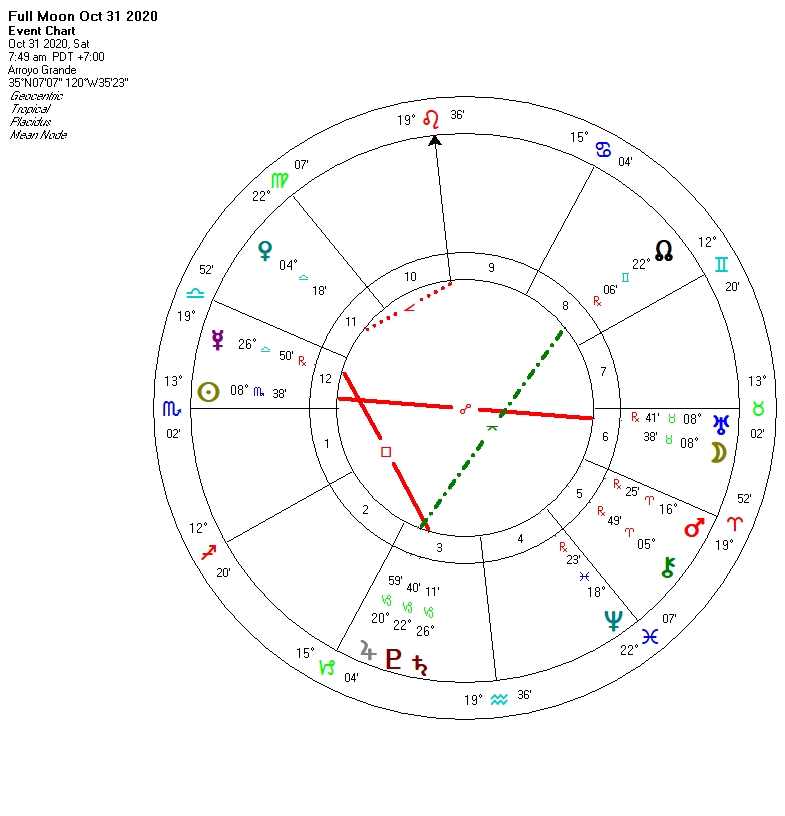
Samhain/Halloween Full Moon October 31, 2020 Read More »

